What Hi-Fi? Verdict
The Omnia is a very capable and well-specced just-add-speakers system that is well worth an audition
Pros
- +
Easy-going presentation
- +
Clear, detailed and large, spacious sound
- +
Excellent features and connectivity
Cons
- -
Rivals have greater dynamic punch, rhythmic accuracy and energy
- -
CD tray quality is flimsy
Why you can trust What Hi-Fi?
The new breed of just-add-speakers streaming systems is slowly but surely gaining popularity, but Audiolab has a trick up its sleeve with its Omnia version: it can play CDs.
While the likes of Naim, Cambridge Audio and NAD combine the old and the new by offering physical inputs and a phono stage alongside the latest hi-res streaming facilities, Audiolab Omnia has all of those but also remembers that not everyone got rid of their CD collection when streaming took the world by storm.
We’ve seen the 2022 Award-winning Technics SA-C600 take the same approach with the addition of CD replay to its one-box streaming abilities, but Audiolab technically got there first: the Omnia made its official debut back in November 2021.
The price of the Audiolab Omnia is £1599 / $2299 / AU$2999, nearly double that of the Technics SA-C600 (£899 / $999 / AU$1749), but competitive with Cambridge’s Audio Evo 75 (£1999 / $2499 / AU$3299).
You’ll have to go double the price for the next step up to the Naim Uniti Atom (£2499 / $3799 / AU$4800), which makes the Omnia seem pretty good value considering the wealth of features you get with the one box.
Features
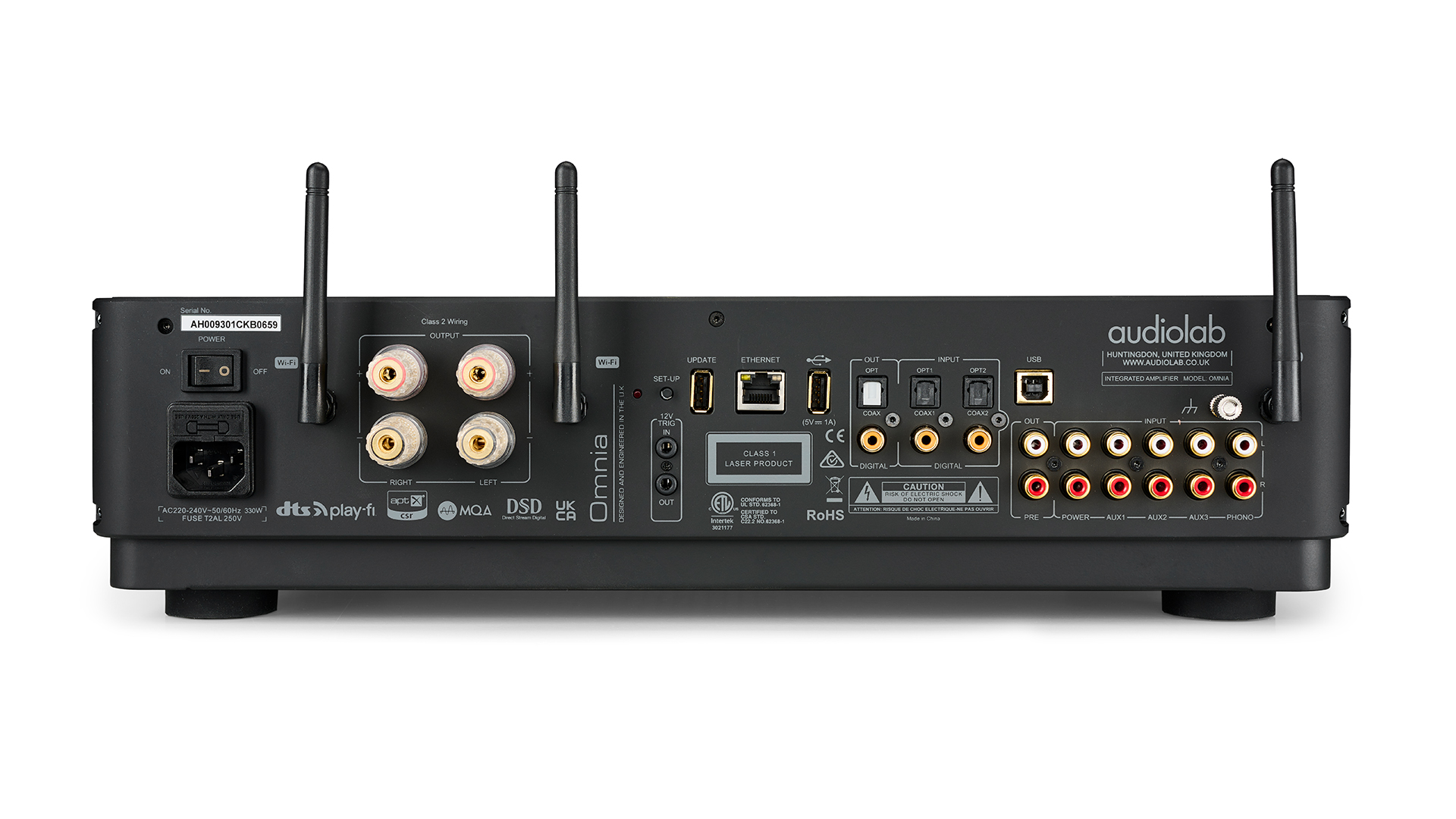
The Audiolab Omnia wins the prize for being the most well-specced and features-laden streaming product of its kind we’ve seen yet. Whether you like your music streamed or still favour physical formats, the Omnia can play it.
Let’s start on the streaming side: you get wired ethernet and dual-band wi-fi, as well as Bluetooth. Yes, the three antennae attached at the back can look a tad busy, but the trade-off is greater stability – which is always preferable if you’ll be streaming wirelessly regularly.
The latest hi-fi, home cinema and tech news, reviews, buying advice and deals, direct to your inbox.
The Omnia’s network streaming section is powered by DTS Play-Fi technology, similarly used by Audiolab’s 6000A Play and Award-winning 6000N Play. It’s through this software and the Play-Fi app that you also get access to a wealth of music services, including Spotify, Tidal, Amazon Music, Deezer, Qobuz and various internet radio stations.
The Play-Fi app (available for iOS and Android) also serves as a kind of music butler, making connection with and playing music from your audio library stored on a DLNA-compatible NAS drive or media server. You can even group together any other Play-Fi-supported products you have into a multi-room system within the app.
The third-party app is stable and works just fine, although at times we miss the personal touch given by the dedicated apps used by Audiolab’s rivals, which serve to streamline the user experience further.
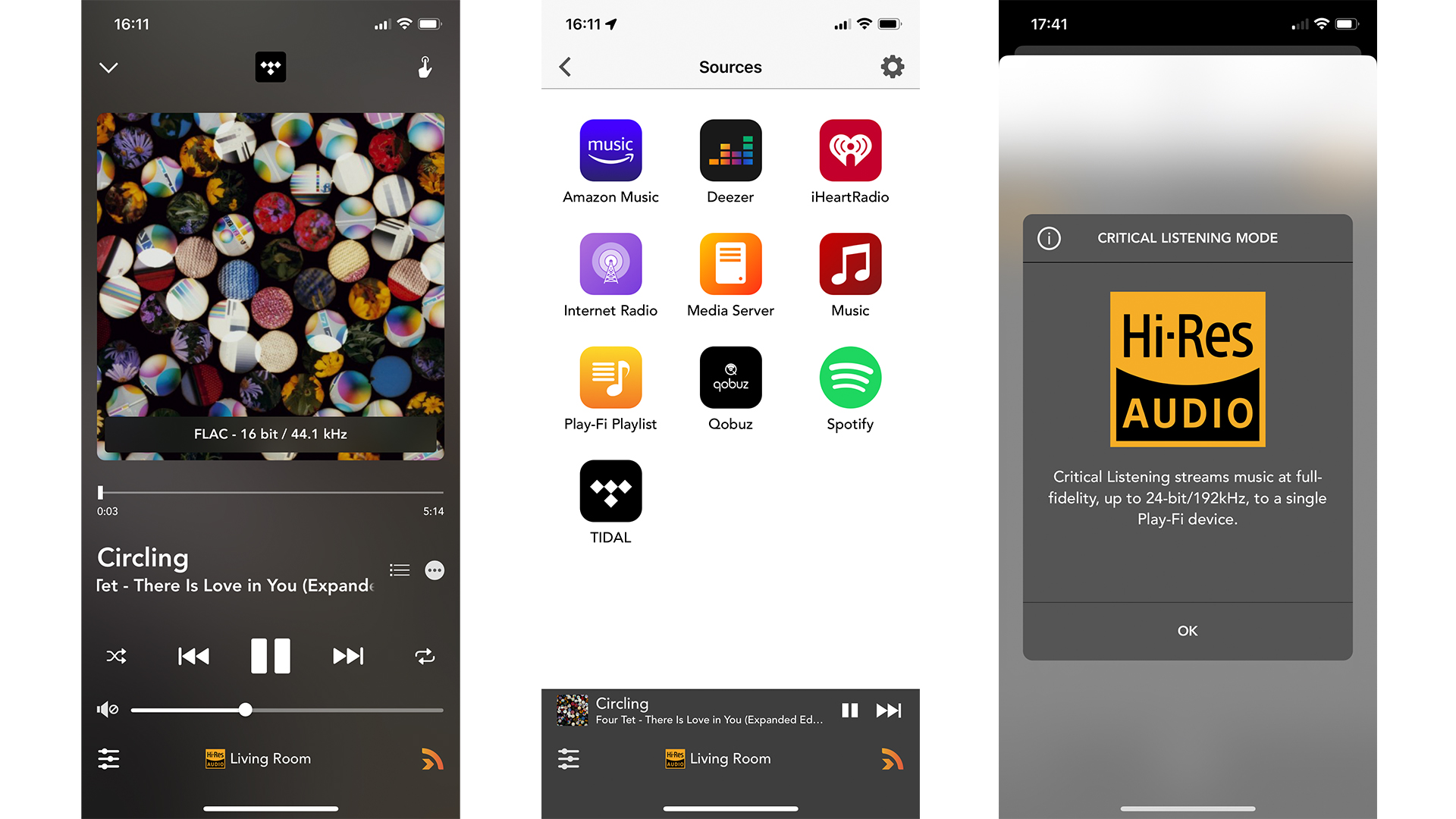
If you’re playing hi-res streams, make sure you toggle the “Critical Listening Mode” on in the app, as this will ensure music is played at 24-bit/192kHz quality over wi-fi or ethernet, without any downsampling. The standard mode tops out at just 16-bit/48kHz as it is optimised more for multi-room bandwidths.
Sticking with the Omnia’s streaming talents: Spotify Connect is also on board, while Bluetooth 5 is accompanied by support for aptX, aptX LL, AAC and SBC codes. It can fully decode MQA files from Tidal and also has Roon Ready certification.
On the physical connections side, there are two inputs apiece for optical and coaxial (and a single output for each), USB type B for connection to laptops and a USB type A port for hard drives. It’s through this PC USB type B input that you can achieve the Omnia’s maximum resolution file support, which is up to 32-bit/786kHz PCM and DSD512.

Sources CD, Bluetooth, Phono MM, Network streaming
Headphone output 6.3mm
Network Wi-fi and ethernet
Inputs Line level x4, Phono MM, USB Type A, USB Type B, optical x2, coaxial x2
Hi-res support 32-bit/768kHz (PCM), DSD512, MQA
Power output 50 watts per channel
Dimensions (hwd)15.6 x 44 x 32.7cm
Weight 9.1kg
There are four analogue line-level inputs and vinyl fans are further served by the inclusion of a moving-magnet phono stage. You can even split the Omnia’s amp stages to hook up an external preamp or power amp. Quite the multi-tasker.
And finally, there is a dedicated headphone amplifier stage that feeds into the 6.3mm jack in the front panel.
Rival systems from Cambridge Audio, Naim and NAD vary in the connections and integrated sources they offer, with CD replay being the main exception. The NAD M10 adds in an HDMI input, which is a useful addition.
There is plenty of well-designed circuitry and advanced technology brimming under the hood that informs all the connections. Inside the Omnia lies a class A/B amplifier, made up of high quality components that are reportedly equivalent to the Audiolab 6000 series’ separate pre and power amps. That’s high acclaim, and the Omnia’s own preamp and power amp stages use short, direct signal paths to ensure as pure a signal as possible.
Meanwhile, the 50W per channel into 8 ohms power output should be more than enough to drive a wide variety of speakers. We use KEF’s LS50 Meta standmounters as well as our reference ATC SCM50 without issue.
The Omnia uses a 32-bit ESS Sabre DAC, and Audiolab’s design team has paid great attention in particular to the post-DAC active filter. This uses op-amps specifically selected for their “synergy” with the ESS Sabre DAC.
Build
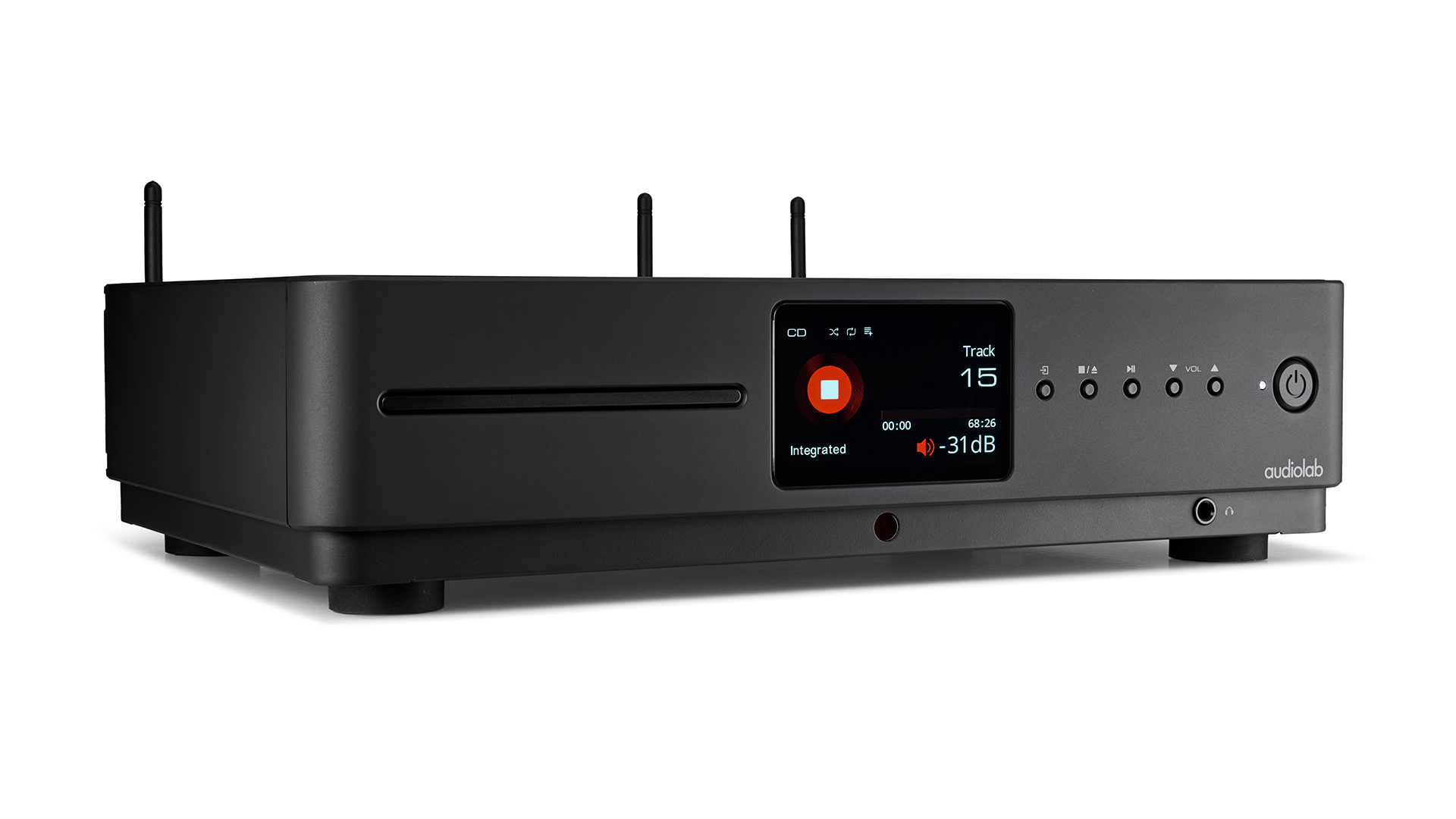
The Omnia has a sturdy, well-built casework that feels every inch of its price tag. Its aluminium enclosure comes in black or silver finishes, and it looks smart, too.
Our only complaint is with the CD disc tray, which feels flimsy to the touch compared to the rock-solid build of the rest of the Omnia. Audiolab says that the disc-reading mechanism is based on the one used in the 6000CDT transport, and uses a high-precision optical system and an electronic data buffer that should minimise any disc-reading errors. We’re happy to report that the flimsiness of the tray doesn’t affect playback performance – just our impression of the product’s quality.
Compared to the more lifestyle-leaning designs of the Technics, Cambridge Audio Evo and Naim Uniti systems, the Omnia’s appearance is decidedly reserved. The front panel keeps things simple with the slim CD tray slot and a handful of small, responsive buttons for power, source selection, playback and volume control.
That’s because the spotlight is given over to the glorious 4.3-inch full-colour IPS LCD screen that dominates the front panel. It’s clear Audiolab’s designers have taken special care with this display: it’s large, easy to read from a distance, displays album artwork and plenty of useful track information without ever looking busy.
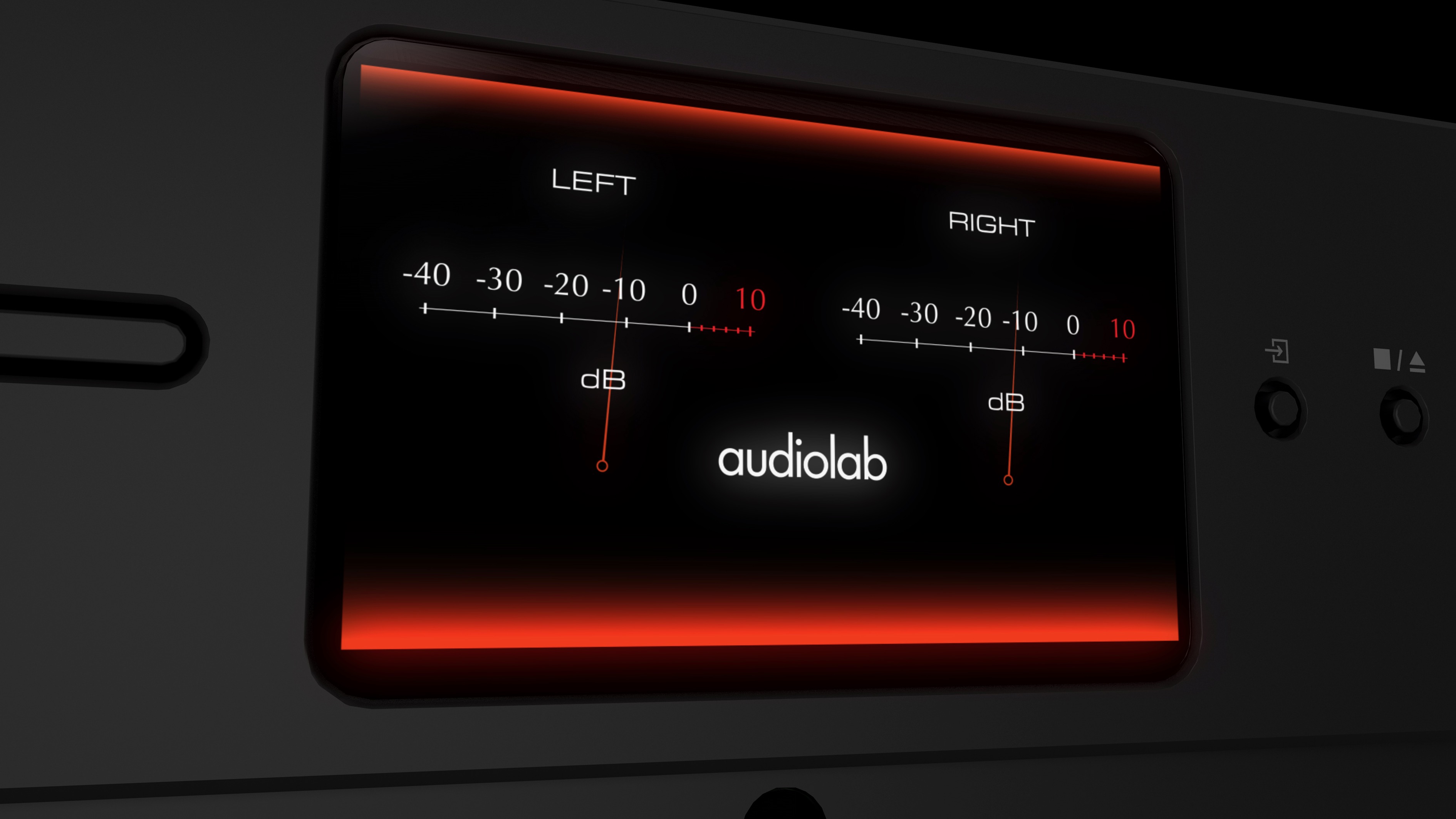
You can even pick different displays: select either analogue or digital VU meters that show real-time decibel levels for the left and right channels. It adds a lovely touch of the old school to a modern hi-fi device and a sense of levity to the Omnia.
While we wish there was a physical volume dial to go with that display, the included remote control does the job well enough. It’s a solidly made handset that feels nice to hold and we found it intuitive in use and a better alternative to the Play-Fi app for adjusting the Omnia’s playback, source and volume.
Sound

The Omnia is a weighty and easy listen from the second we press play. The sound is rooted with authority, is clear and defined, with a decent handle on rhythm and timing.
We play A Perfect Circle’s Thirteenth Step album on CD, and the Omnia shows off its power. It’s a big and bold performance, with ample grunt and texture to the heavy guitars and ferocious drums. Vocals are focused and forthright.
While we could do with more outright attack and punch, we like how open and spacious it all sounds. There’s good dynamic contrast, with the Audiolab able to reach the charging intensity of the heavier chorus with as much skill as the quieter, more sombre moments of Pet.
Switch to Chilly Gonzales’ piano compositions (played on CD and streaming via Tidal), and you can clearly hear the deep textures and resonances around each piano note being struck, as well as the higher tinkling notes that are crystal clear (but never bright). It’s a skilled and smooth approach, with a balance that we could listen to for hours without tiring.
This easy-going character is replicated across all of the Audiolab’s many sources and inputs, including the headphones port (which we tested using Focal’s excellent Clear Mg over-ears). However, we found that songs through Bluetooth sounded the weakest; the Omnia has so many ways of playing music, we’d use any of them instead of Bluetooth.
It may be nearly half the price, but the talented Technics SA-C600 system shares more features in common with the Omnia than other rivals, especially the CD player. The Technics may not be as big-scaled, open or reveal as much detail as the Omnia, but it’s more adept at conveying enthusiasm, rhythmic precision and dynamic punch – all qualities that the Omnia could do with a healthy dose of.
The rapid-fire keys – which time with stunning precision – and rousing sense of momentum in Gonzales’ Blizzard in B Flat Minor are more immediate and captivating through the Technics. The interplay of notes and precise edges in songs like Four Tet’s Circling or Massive Attack’s Teardrop is more tangible, too. While Omnia is more capable in hi-fi terms, we simply want a bit more punch and drive to the proceedings.
Verdict
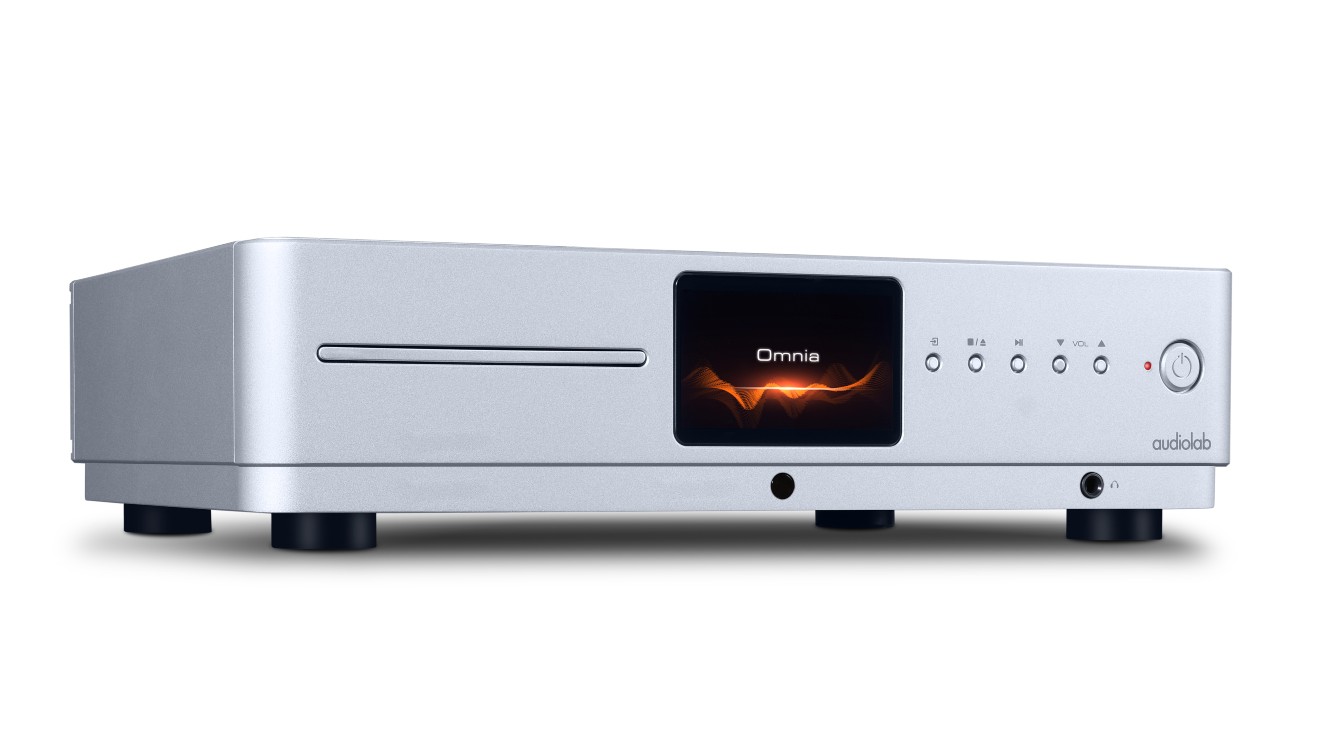
As it stands, though, the Omnia is extremely easy to listen to, and we can imagine many being more than content with its smooth, authoritative presentation. If you’re after a high-performing streaming system with all the bells and whistles you can think of, this Audiolab is well worth considering.
SCORES
- Sound 4
- Features 5
- Build 4
MORE:
Read our review of the Technics SA-C600
Also consider the Cambridge Audio Evo 75
These are the best hi-fi systems you can buy
What Hi-Fi?, founded in 1976, is the world's leading independent guide to buying and owning hi-fi and home entertainment products. Our comprehensive tests help you buy the very best for your money, with our advice sections giving you step-by-step information on how to get even more from your music and movies. Everything is tested by our dedicated team of in-house reviewers in our custom-built test rooms in London, Reading and Bath. Our coveted five-star rating and Awards are recognised all over the world as the ultimate seal of approval, so you can buy with absolute confidence.

